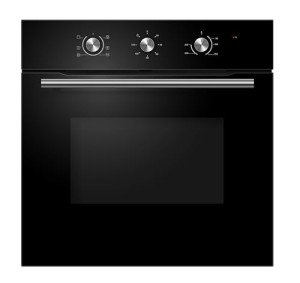The Comprehensive Guide to Built-In Ovens
Introduction
Built-in ovens are a staple in contemporary cooking areas, integrating elegance with functionality. They use a streamlined aesthetic and efficient cooking capabilities, making them a preferred option for homeowners and cooking enthusiasts alike. This short article explores the advantages of built-in ovens, their different types, key functions to think about, installation pointers, and upkeep guidance, along with often asked questions.
Benefits of Built-In Ovens
Built-in ovens included a range of advantages that contribute to their appeal. Here are some crucial benefits:
- Space-Saving Design: Built-in ovens are created to fit effortlessly into cabinetry, permitting a more organized and space-efficient kitchen design.
- Aesthetic Appeal: They supply a streamlined and modern appearance that can enhance the general design of the kitchen.
- Improved Functionality: Built-in ovens typically come with innovative functions and technologies that support different cooking approaches.
- Enhanced Cooking Experience: Many built-in models include self-cleaning functions, temperature probes, and programmable settings, enhancing the cooking experience.
- Increased Property Value: A properly designed kitchen with built-in appliances can boost the value of a home.
Kinds Of Built-In Ovens
Built-in ovens can be found in numerous types, each developed to fulfill numerous cooking preferences and needs. Here are the primary types:
| Type of Built-In Oven | Description |
|---|---|
| Single Oven | A single, standalone oven for conventional baking and roasting. |
| Double Oven | Integrates 2 ovens in one unit, permitting several meals to cook at various temperatures. |
| Wall Oven | Installed in the wall, freeing up counter space, perfect for little kitchen areas. |
| Convection Oven | Utilizes fans to circulate hot air for even cooking, improving the results of baked goods. |
| Steam Oven | Uses steam for much healthier cooking alternatives, preserving nutrients in food. |
Secret Features to Consider
When choosing a built-in oven, a number of functions can affect efficiency and use. Here are some essential functions to remember:
Cooking Modes
- Bake: Traditional baking with bottom heat.
- Broil: Top heat cooking suitable for browning and crisping.
- Convection: Circulates hot air for even cooking.
- Steam: Uses steam for much healthier cooking choices.
Size and Capacity
- Requirement sizes normally range from 24 to 30 inches wide.
- Consider the internal capacity-- it can range from 3 to 6 cubic feet, permitting various meal sizes.
Controls and Smart Features
- Touchscreen Controls: Easy programs and adjustments.
- Smart Technology: Connectivity features permit remote monitoring and control through smartphone applications.
Energy Efficiency
- Look for models with ENERGY STAR scores, indicating lower energy intake.
Security Features
- Features like vehicle shut-off and kid locks enhance safety throughout operation.
Setup Tips
Setting up a built-in oven might need professional assistance, but here are some general pointers to remember:
- Choose the Right Location: Ensure there's adequate area in your kitchen cabinetry for setup, remembering ventilation requirements.
- Electrical Requirements: Check that your kitchen's wiring fulfills the oven's power requirements, especially for electric designs.
- Level the Oven: Ensure the oven is level to promote even cooking.
- Secure the Oven: Attach it strongly to the cabinets to prevent movement throughout usage.
Upkeep Advice
Regular upkeep is vital for the longevity and effectiveness of a built-in oven. Here's how to keep it in top shape:
- Regular Cleaning: Wipe down surfaces after each usage and carry out deep cleaning regularly.
- Check Seals: Inspect door seals for wear and ensure they keep an airtight fit to improve energy efficiency.
- Calibrate Temperature: If food regularly comes out overcooked or undercooked, consider recalibrating the oven's temperature settings.
- Professional Servicing: Schedule annual check-ups with an experienced professional to preserve optimal efficiency.
Frequently asked questions
What is the distinction between a built-in oven and a freestanding oven?
Built-in ovens are created to be set up within kitchen cabinetry, using a seamless appearance. In contrast, freestanding ovens are standalone units that normally come with their own cooktop.
Are built-in ovens more pricey than freestanding models?
Normally, built-in ovens can be more costly due to the added installation costs and advanced functions. However, linked site differ extensively based upon brand name, size, and functionalities.
Can I set up a built-in oven myself?
While it is possible to install a built-in oven yourself, it is recommended to employ a professional to guarantee correct installation, specifically if modifications to kitchen cabinetry or electrical work are needed.
How often should I clean my built-in oven?
It is recommended to clean your built-in oven routinely after heavy use. For much deeper cleanings, use the self-cleaning function if offered or regularly perform manual cleansing to prevent accumulation.
Built-in ovens are a valuable addition to any kitchen, providing both aesthetic appeal and advanced cooking abilities. By comprehending their types, features, installation, and maintenance requirements, house owners can make educated options that improve their cooking experience and boost the general value of their homes. As kitchen designs continue to develop, built-in ovens will likely remain a prominent choice for modern-day homes.

